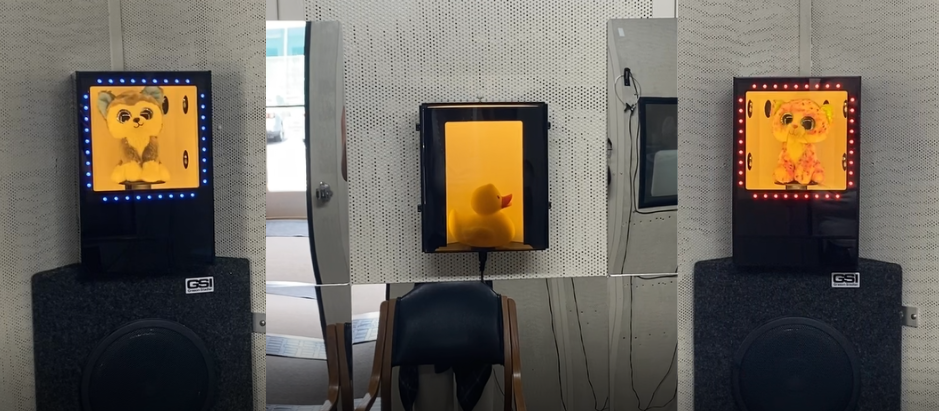Imagine a world where every sound paints a vibrant picture, where whispered secrets are as clear as a booming orchestra. For most, this auditory tapestry is simply a given. But for young children, understanding and responding to sound is a developmental journey, and sometimes, a journey that requires a little assistance. One key tool in navigating this sonic landscape is a specific hearing test, often identified by a cryptic acronym: VRA. But what does VRA stand for, and why is it so important in the realm of pediatric audiology?
VRA stands for Visual Reinforcement Audiometry. It’s a behavioral hearing assessment technique specifically designed for infants and young children, typically between the ages of six months and two and a half years. Understanding this definition, however, only scratches the surface. To truly appreciate the significance of VRA, one must delve into its methodological underpinnings and its crucial role in early hearing detection.
Let’s unpack the components of Visual Reinforcement Audiometry piece by piece. The ‘Visual Reinforcement’ aspect is pivotal. It leverages a child’s innate attraction to visual stimuli to elicit a response to auditory cues. Instead of simply asking a child if they hear a sound, the audiologist trains them to associate a sound with an engaging visual reward. This reward might be a lighted toy, a briefly animated video, or even just a captivating, eye-catching display.
The setup for VRA typically involves a sound-treated booth, ensuring an acoustically controlled environment. Within this booth, the child sits comfortably – often on a parent’s lap or in a highchair – facing a speaker or wearing headphones. Strategically placed around the child are visual reinforcers, hidden from view until activated. An audiologist, operating outside the booth, presents a series of sounds, varying in frequency (pitch) and intensity (loudness).
The process is a delicate dance of observation and response. Initially, the audiologist establishes a conditioning phase. This involves presenting a sound paired with a visual reinforcer simultaneously. The child learns that hearing the sound “predicts” the appearance of the visually stimulating reward. Once the child consistently turns their head towards the sound source in anticipation of the visual, the testing phase begins. Now, the audiologist presents the sound alone. If the child turns their head appropriately, they are rewarded with the visual reinforcement. This head-turn response is the key indicator that the child has perceived the sound.
The astute reader might wonder, what types of sounds are used in VRA? The answer is multifaceted. Pure tones, representing single frequencies, are frequently employed to determine a child’s hearing threshold – the softest sound they can consistently hear at each frequency. Speech stimuli, such as the child’s name or simple words, can also be used to assess speech awareness and detection abilities.
Why is VRA so vital? Early identification of hearing loss is paramount for optimal language development and cognitive growth. Children with undetected hearing impairments may experience significant delays in speech acquisition, academic performance, and social-emotional development. VRA allows audiologists to obtain objective data about a child’s hearing capabilities at an age when traditional hearing tests, requiring active participation and verbal responses, are often unfeasible.
Think of it this way: without VRA, many instances of hearing loss would remain undiagnosed until a child reaches an age where they can reliably participate in conventional testing methods. This delay, even a matter of months, can have cascading effects on a child’s overall development. VRA acts as a crucial early detection system, enabling timely intervention and management strategies, such as hearing aids or cochlear implants, to be implemented.
The information gleaned from VRA informs a range of crucial decisions. It allows audiologists to determine the type, degree, and configuration of hearing loss. This detailed auditory profile then guides the selection of appropriate amplification devices, if needed, and facilitates the development of individualized habilitation plans, designed to maximize a child’s auditory potential and promote effective communication skills.
Moreover, VRA is not a static test; it’s adaptable. Audiologists are skilled at modifying the procedure based on a child’s individual temperament and attention span. They may use a variety of visual reinforcers to maintain engagement, shorten testing sessions, or incorporate play-based elements to make the experience more enjoyable and less stressful for the child.
In conclusion, Visual Reinforcement Audiometry (VRA) represents a cornerstone of pediatric audiology. It is not merely a hearing test; it’s a window into a child’s auditory world, providing invaluable insights into their ability to perceive and process sound. By leveraging a child’s natural curiosity and visual interest, VRA empowers audiologists to identify hearing loss early, paving the way for timely intervention and ensuring that every child has the opportunity to fully participate in the symphony of life. The seemingly simple act of turning one’s head towards a captivating image can unlock a world of sound and possibility for a child with hearing challenges. The implications are profound, the potential transformative.









Leave a Comment